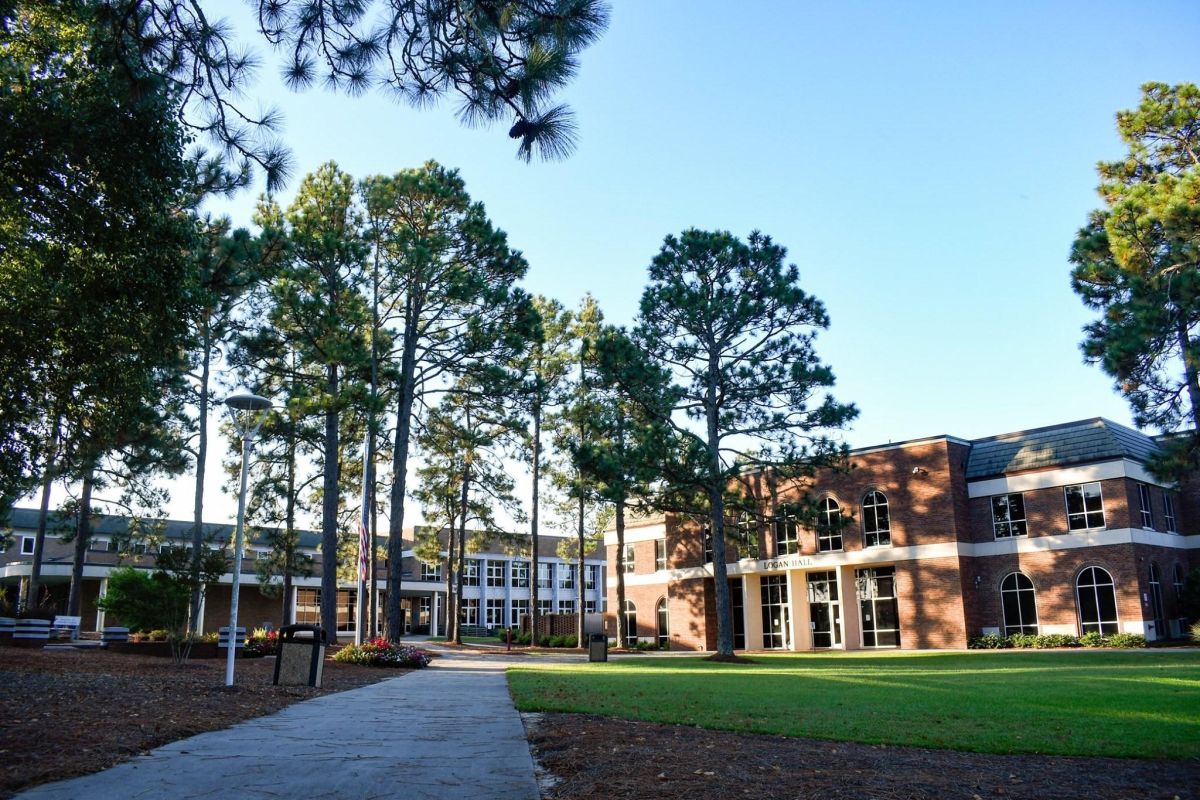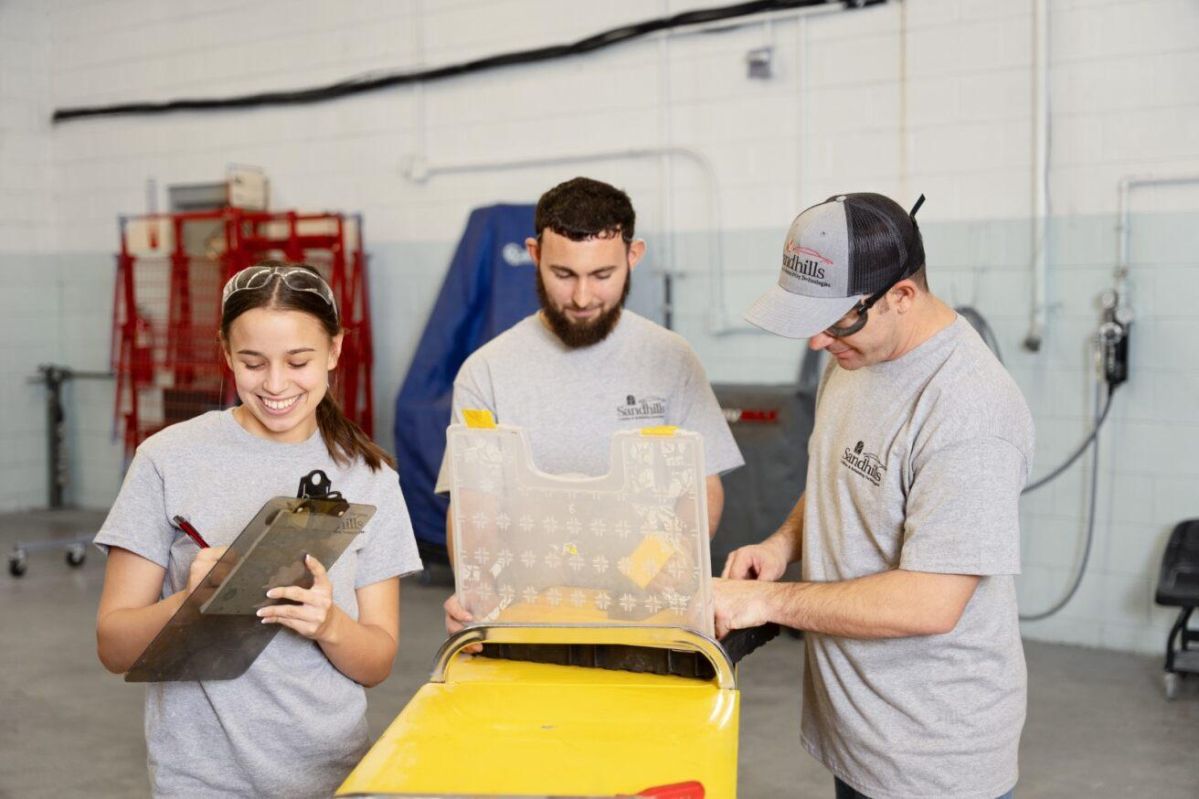Low, slow and methodical are the operating principles for Sandhills Community College’s new Collision Engineering program, currently revving up for its first semester at the school’s Pinehurst, NC, campus. The program will run on an immersive apprentice training framework, designed to produce professionals looking to stay in the business.
A Hand-Selected Group
The school hand-selected five participants for the program’s initial iteration.
“We're trying to find good students that actually want to stay in the collision program,” said Brian Garner, a Sandhills associate professor and the school’s chairperson for transportation repair programs. “We have 15 or 20 students in our normal [associate degree] program. But you know, you might have five that actually stay in the industry.”
 Brian Garner.
Brian Garner.
This select student group, he said, includes three members just out of high school and a young adult looking to change careers. The participants will spend eight weeks in the classroom learning basic to more advanced skills.
“We're going to start with ‘How do you move a car into the shop?’ Kind of like a triage, right? You get so many [students] nowadays that have never changed a tire or understand tools at all. So, we're gonna start really, basic -- we’ll make sure it's got fluids and so forth,” Garner explained.
Later, before they start in paint, students will learn about how shops run with lessons on equipment like welders and frame racks.
The school was selective, too, in partnering with the businesses that will host apprentices. Garner said his department looked for places that could be “fully vested” and help students “get an outlook on the whole career.”
Participating shops will provide another eight-week educational stint, making sure apprentices spend time everywhere from front offices to wash bays to shadowing actual technicians of differing skill levels. The idea is for students to stay on with these shops after their Sandhills apprenticeships end, Garner said.
Students will apprentice with several North Carolina repair facilities: Hendrick Collision Center in Fayetteville, Elite Paint & Body, Inc. in Sanford, Body Works Plus in Charlotte and Griffin Chrysler-Dodge in Rockingham.
Getting Started
Garner remembers hearing about the Collision Engineering program at the Southeast Collision Conference in South Carolina a couple of years ago. Missouri-based Enterprise Mobility, perhaps best known for its vehicle rental services, had partnered at that time, via its Enterprise Mobility Foundation, with Ranken Technical College in St. Louis to pilot the 16-week classroom/apprenticeship model.
Garner and another Sandhills instructor in attendance thought it sounded like a positive addition for the college, which has had a stake in the auto body industry with some form of educational programming since 1964. The school, Garner acknowledged, is small though, and he wasn’t entirely sure it would be a fit for the engineering program’s organizers. Hopeful, he pushed forward.
“We're not the biggest and flashiest school, probably, in North Carolina,” he said. “I called them, and they were super great. We had a few basic conversations about us.”
Organizers flew out to see Sandhills, and the process of getting the program in place went pretty quickly from there, Garner said.
A Significant Investment
Enterprise launched the program in 2021 with Rankin in an effort to not only develop talent for entry level positions but to encourage retention of technicians throughout the industry. The investment comes at a significant time.
The TechForce Foundation released a report in 2023 stating longstanding shortages of skilled workers across trade industries could abate soon. For the first time in a decade, there has been an increase in post-secondary graduates trained to serve the collision sector, the foundation said -- in 2022, there were 4,725, up 5% from 4,487 in 2021.
 The Sandhills Community College campus in Pinehurst, NC.
The Sandhills Community College campus in Pinehurst, NC.
Public, two-year colleges like Sandhills, the report found, were producing by far the lion’s share of collision program graduates in 2022 -- 2,500, compared to private, for-profit two-year programs at 1,045 and public programs lasting four years or more at 677.
Although the foundation predicted significant declines in industry entrants filling new positions, it forecast a steady increase for those coming in to fill replacement positions.
Since the Collision Engineering program’s launch in four schools nationwide, several more institutions have joined, including Sandhills, and prominent partners like the Ford Motor Company Fund have stepped up. The Ford Fund is offering scholarships to students and funding for schools to implement the program. Other corporate partners, according to the program’s website, beacollisionengineer.com, include heavy hitters like GEICO, Professional Parts Group, 3M and Matco Tools.
Working Out Kinks and Establishing Buy-In
Despite the program’s growing prominence and stout backing, it’s been important to Sandhills leadership to keep the program small initially -- partially to keep up with the administrative requirements.
“We didn't want to start with too many students,” Garner said. “There's a lot of paperwork that we've never seen before that's going to go along with this -- tracking students through their apprenticeship and all that … We kind of want to start small, spend the first year trying to figure out all the kinks.”
It’s also important, he said, to show shops the college is serious about sending ready students, and part of that process is choosing individuals who are up to every part of the task.
“We're trying to be a good partner to the shops, and so [students] had to be willing to do the apprenticeship model,” he said. “They have to work a 30- to 40-hour week.”
And he’s hoping shops will eventually take notice of the program and send students who already have a foundation for additional training.
“Guys who are in the wash bay who’ve been there for a while and are wanting to move up,” he suggested. “We're hoping shops will want to send them to us, and that way they already have some buy-in.”















Elizabeth Green